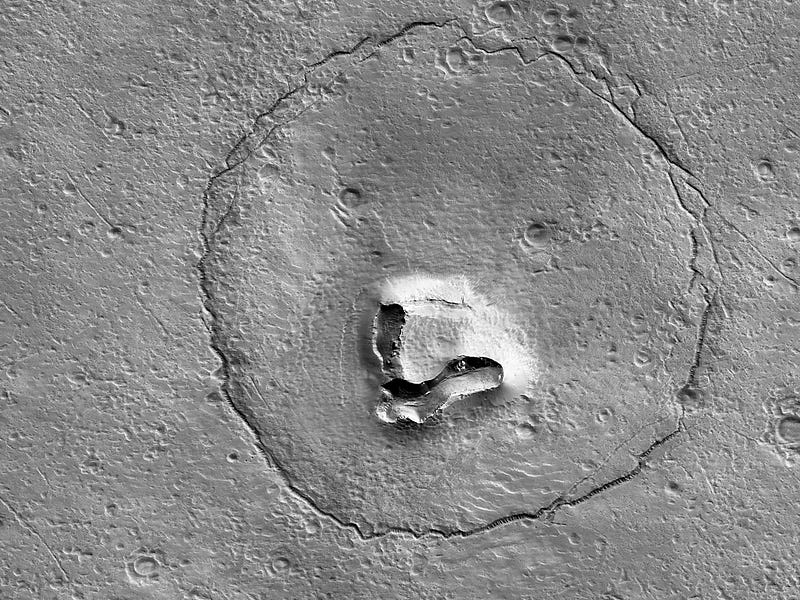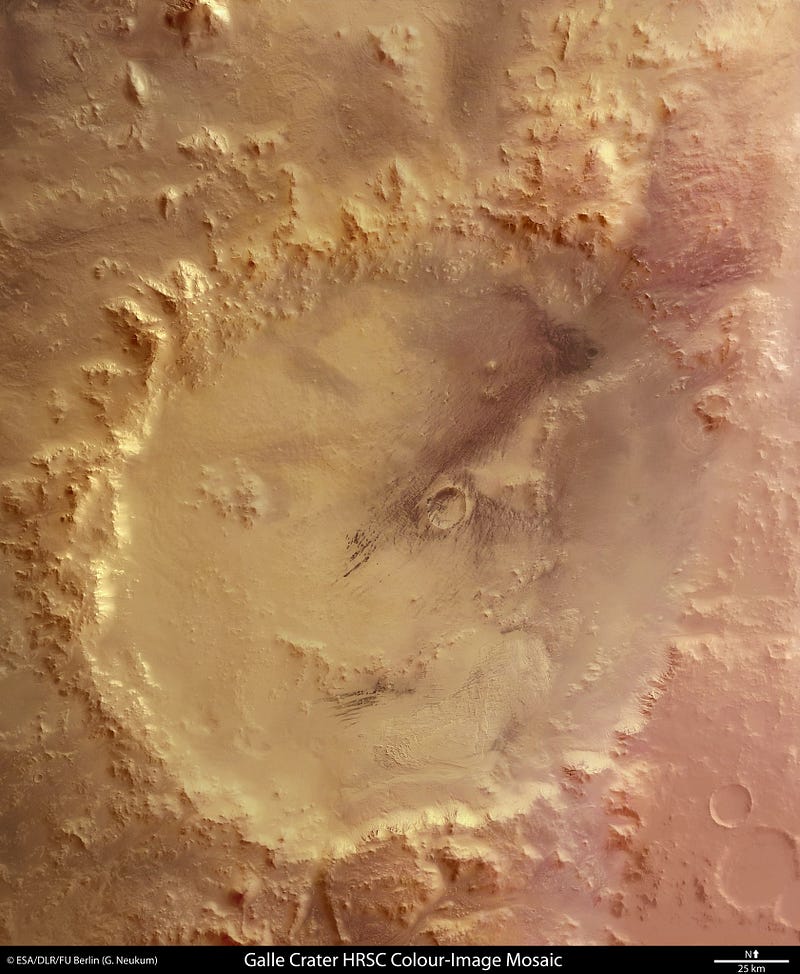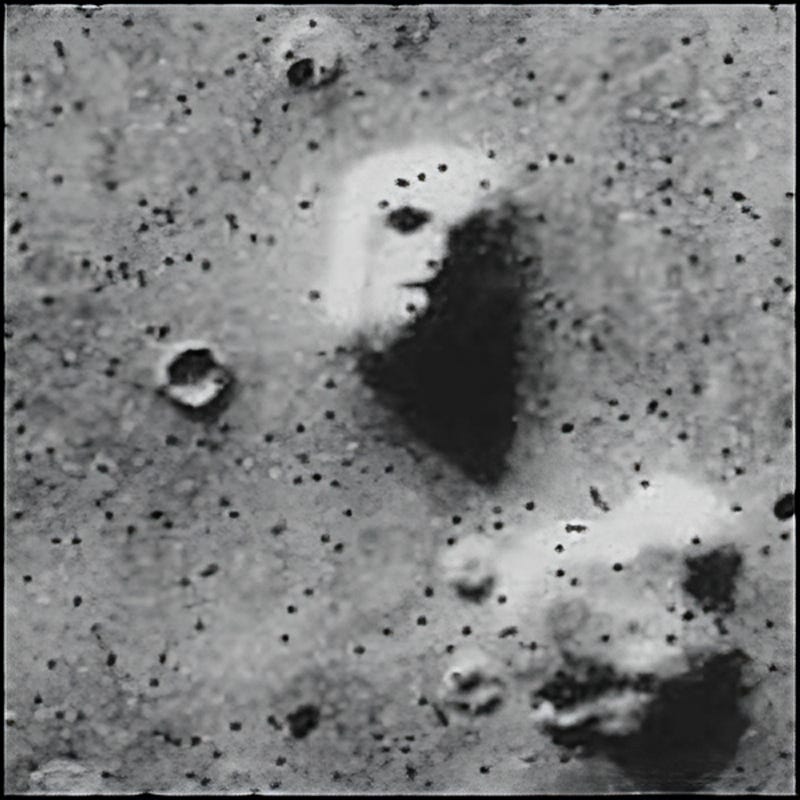A Surprising 'Bear' Discovery on Mars Captured by NASA
Written on
Chapter 1: Unveiling the Martian Mystery
NASA’s latest probe has managed to capture a fascinating image of Mars that appears to show a bear. The high-resolution camera of the US space probe reveals a creature with eyes and a distinct muzzle, its surprised expression echoing the reactions of those who view this intriguing photograph.

[Photo: NASA, Public domain]
For decades, scientists have been on the hunt for extraterrestrial life. The consensus among many researchers is that life exists not only within our galaxy but beyond it as well. However, the likelihood of encountering aliens may be slim, at least in the foreseeable future.
Interestingly, over the past few years, NASA has delighted the public with photographs revealing enigmatic faces and curious structures on the Martian landscape. While some may wish to believe these are signs of extraterrestrial beings, the truth is often more mundane. These shapes are generally the result of natural processes such as erosion and the melting of permafrost, which expose different layers of the Martian surface.

Happy face on Mars — [Photo: ESA/DLR/FU Berlin (G. Neukum), CC BY-SA 3.0 IGO, via Wikimedia Commons]
The latest image from NASA’s Mars Reconnaissance Orbiter (MRO) is no exception. This particular shot, taken by the HiRISE (High Resolution Imaging Science Experiment) camera, captures what appears to be a teddy bear’s face, complete with characteristic features.

The phenomenon responsible for this bear-like appearance is known as pareidolia, a psychological tendency to see familiar shapes in random patterns, such as in clouds or rock formations. Scientists clarify that what seems to be a bear is likely an impact crater—“It’s a hill with a sunken V-shaped structure (which resembles a nose), two craters (interpreted as eyes), and a circular crack, giving the impression of a head,” according to researchers at NASA.
The circular crack may result from sediment burial, while the bear-like features could represent remnants of an ancient volcanic activity. Interestingly, last October, NASA captured an image of the Sun that appeared to be “smiling,” featuring eyes, a nose, and a mouth. Unlike the surprised bear, the Sun’s expression was one of laughter, another instance of pareidolia, where black spots seen in the image were coronal holes, sources of solar wind.

Chapter 2: The Mission of the Mars Reconnaissance Orbiter
The Mars Reconnaissance Orbiter continues to fulfill its mission, with the potential for more captivating imagery in the future. Its objectives include:
- Capturing detailed images of Mars
- Investigating the planet’s climate and atmosphere
- Providing data to model Mars' geological evolution
- Exploring subterranean water sources
- Facilitating communication with the Mars Exploration Rover and Curiosity rovers, as well as the Phoenix lander
Launched by NASA on August 12, 2005, aboard an Atlas V rocket, the orbiter entered Martian orbit on March 10, 2006. Just 14 days later, the HiRISE camera captured its first test image, revealing a portion of the Bosporos Planum region, illustrating a phenomenon akin to early morning fog.
In addition to its ongoing research, the probe is expected to identify potential landing sites for future manned missions to Mars, making it the most advanced spacecraft ever sent to explore the Red Planet.
The first video titled "NASA Astronomers Discovered a 'Bear' on Mars" explores the fascinating discovery and the science behind it.
The second video titled "Red Planet's Mysterious Findings! | NASA's Unexplained Files | Full Episode | Discovery Channel" delves into various unexplained phenomena observed on Mars.
Thank you for taking the time to read this article! If you enjoyed it, I would appreciate your support through claps, follows, or tips!